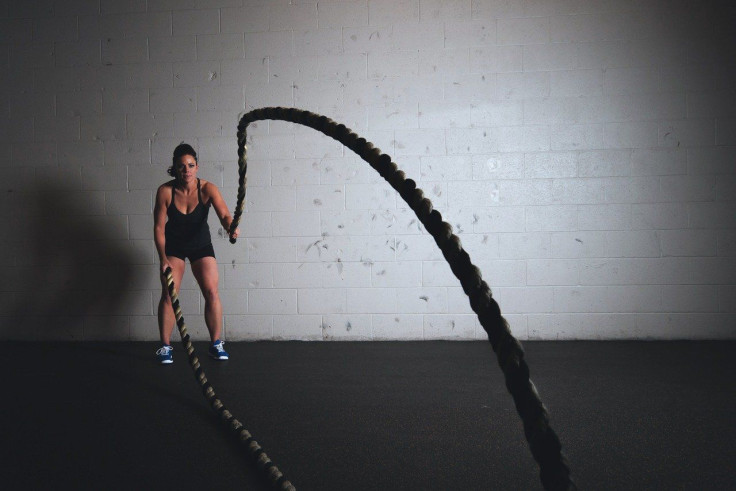This Is How Much Exercise You Need Weekly To Reduce COVID-19 Risk, Severity
KEY POINTS
- Those who exercised regularly had an 11% lower risk of COVID-19 infection
- The greatest benefit came with 150 minutes of moderate activity per week
- This "highlights" physical activity's potential as a "public health strategy"
Having regular physical activity may help lower the risk of adverse COVID-19 outcomes, a team of researchers has found. But how much exercise does one need to get the best protection?
For their work, published in the British Journal of Sports Medicine, the researchers scoured databases for studies that found an association between regular exercise and "at least one COVID-19 outcome in adults."
Regular physical activity is shown to have a protective effect against the "infectivity and severity" of respiratory infections, the researchers explained. And physical activity has been known to be beneficial in reducing the risk factors for increasing COVID-19 severity, such as diabetes and hypertension.
The team aimed to look at the link between physical activity and the risks of COVID-19 infection, severity, hospitalization and death.
They looked at the results of 16 studies, the British Medical Journal noted in a news release. This involved a total of about 1.8 million adult participants, with the studies being carried out in various countries including South Korea, Brazil, the U.S. and South Africa.
Researchers found that overall, those who engaged in regular physical activity had an 11% lower risk of COVID-19 infection, 44% lower risk of severe COVID-19, 36% lower hospital admission risk and 43% lower death risk from COVID-19 compared to those who were physically inactive.
"We report the importance of physical activity in lowering the risk of infectivity, hospitalization, severity and mortality of COVID-19," the researchers wrote.
The "greatest benefit" comes with "at least 500 metabolic equivalent of task (MET)-min per week of physical activity." This equates to 150 minutes of moderate-intensity exercise or 75 minutes of "vigorous intensity" physical activity a week, which is actually in line with the key recommendations for adults in the Physical Activity Guidelines for Americans.
This highlights the various impacts of physical activity on the human body, such as its anti-inflammatory effects, the patients' muscular and cardiorespiratory fitness and its protective impacts on the immune system, the researchers noted.
While the wory does have limitations, such as differing study designs, the results "highlight the protective effects" of physical activity "as a public health strategy."
"These findings may help guide physicians and healthcare policymakers in making recommendations and developing guidelines with respect to the degree of physical activity that can help reduce the risk of infectivity, hospitalization, severity and mortality of COVID-19 at both the individual and the population level, especially in high-risk patients," they wrote.

© Copyright IBTimes 2024. All rights reserved.






















